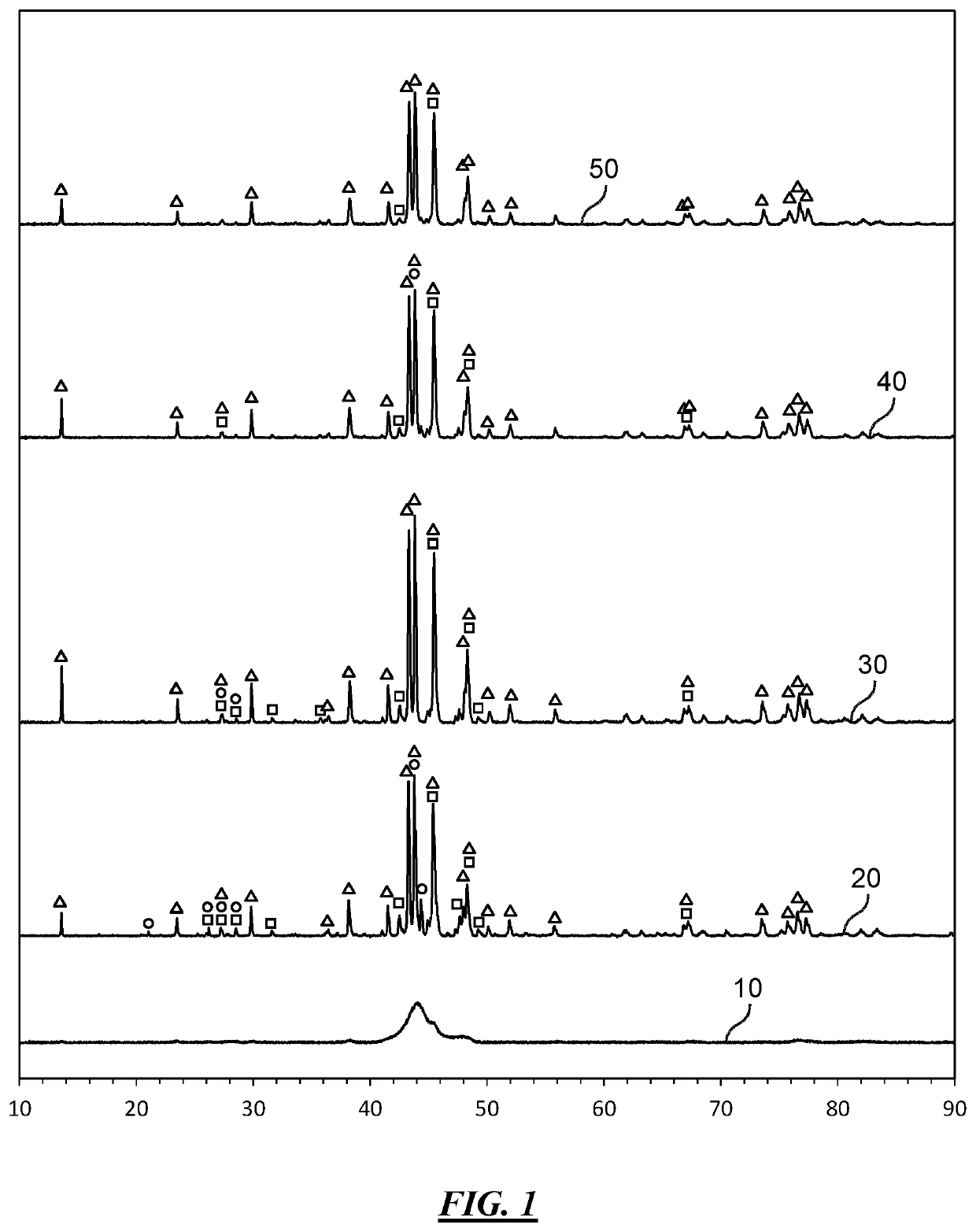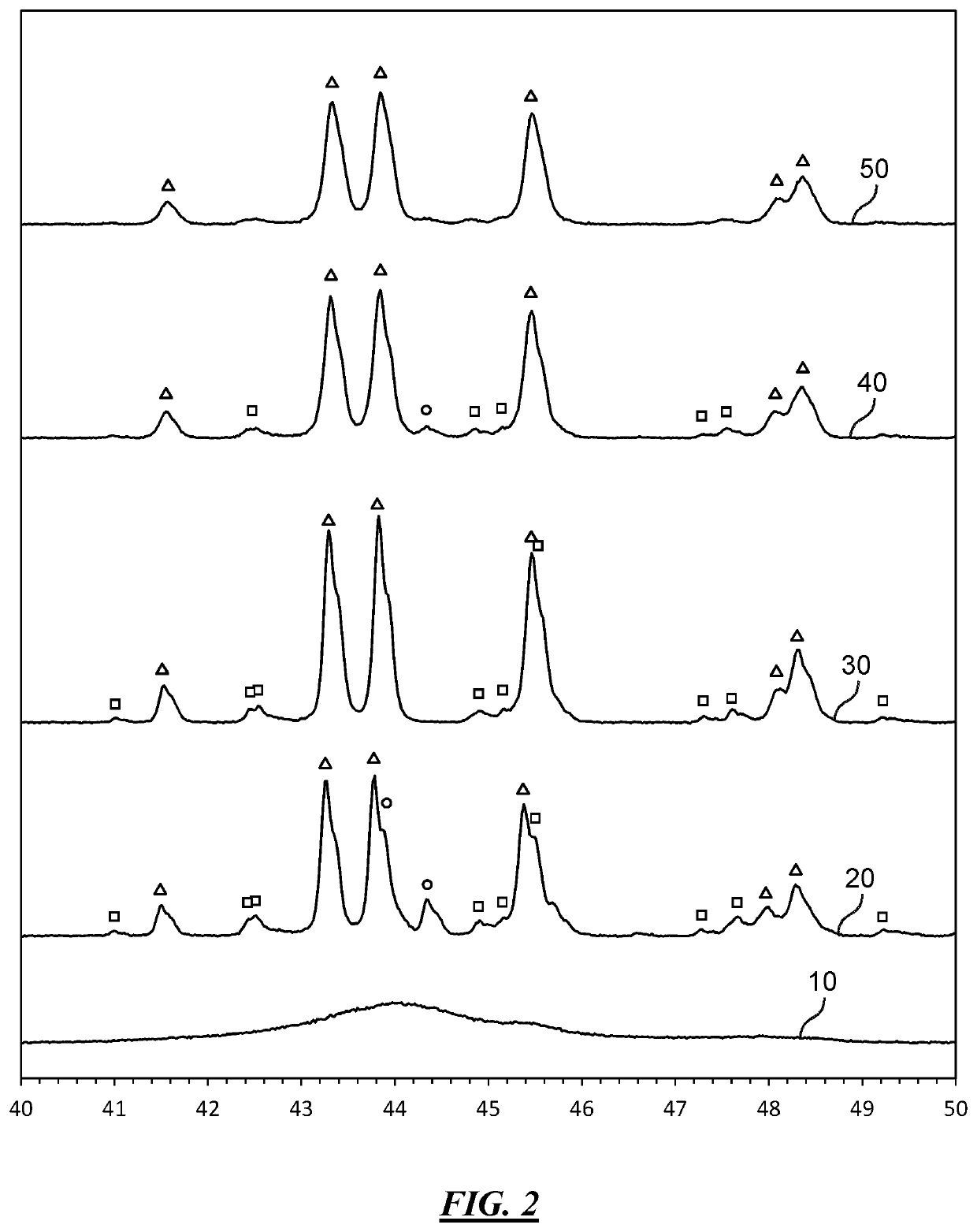Method of manufacturing a crystalline aluminum-iron-silicon alloy
a technology of iron aluminide and manufacturing method, which is applied in the direction of transportation and packaging, metal-working apparatus, etc., can solve the problems of reduced density, reduced creep resistance of iron aluminide, and reduced ductility of iron aluminide,
- Summary
- Abstract
- Description
- Claims
- Application Information
AI Technical Summary
Benefits of technology
Problems solved by technology
Method used
Image
Examples
examples
[0047]An aluminum-, iron-, and silicon-containing precursor material was prepared in powder form, samples of the precursor material were mechanically alloyed and heat treated at different temperatures and durations to produce crystalline Al—Fe—Si alloy samples comprising varying amounts of a h-Al—Fe—Si crystalline phase. X-ray powder diffraction was used to identify the crystalline phases present in the resulting crystalline Al—Fe—Si alloy samples.
[0048]Three (3) grams the precursor material were prepared under argon gas by weighing out and mixing together appropriate amounts of a 99.5% pure aluminum powder from Alfa Aesar (Stock #11067, Lot #A26127), a 97% pure iron powder from J.T. Baker (Lot M47600), and a 99.5% pure silicon powder from Alfa Aesar (Stock #12681, Lot #G08H24). The amount of each of the aluminum, iron, and silicon powders used to prepare the precursor material are shown in Table 1 below.
[0049]
TABLE 1Target Weight (%)Target Weight (g)Actual Weight (g)Al powder46.731...
PUM
| Property | Measurement | Unit |
|---|---|---|
| temperature | aaaaa | aaaaa |
| density | aaaaa | aaaaa |
| temperature | aaaaa | aaaaa |
Abstract
Description
Claims
Application Information
 Login to View More
Login to View More - R&D
- Intellectual Property
- Life Sciences
- Materials
- Tech Scout
- Unparalleled Data Quality
- Higher Quality Content
- 60% Fewer Hallucinations
Browse by: Latest US Patents, China's latest patents, Technical Efficacy Thesaurus, Application Domain, Technology Topic, Popular Technical Reports.
© 2025 PatSnap. All rights reserved.Legal|Privacy policy|Modern Slavery Act Transparency Statement|Sitemap|About US| Contact US: help@patsnap.com


